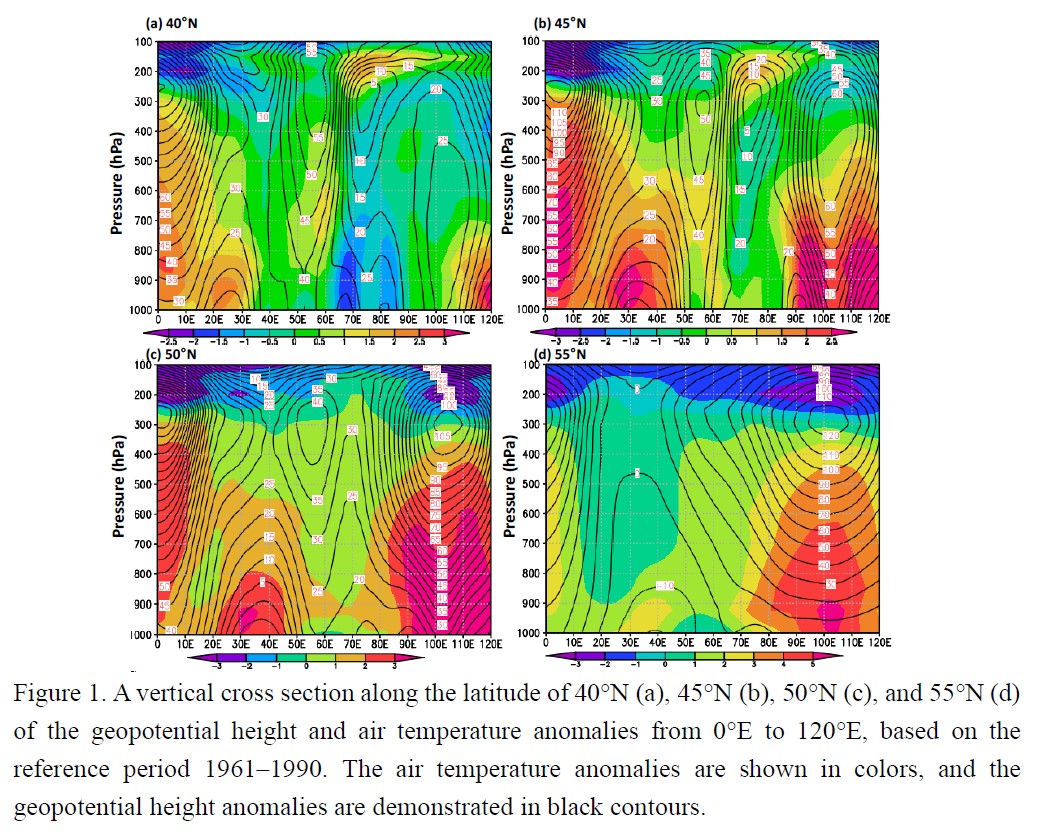Graphical Abstract
Zou, S., J. Abuduwaili, J. Ding, W. Duan, P. De Maeyer, and T. Van de Voorde, 2020: Description and attribution analysis of the 2017 spring anomalous high temperature causing floods in Kazakhstan. J. Meteor. Soc. Japan, 98, 1353-1368.
Special Edition on Extreme Rainfall Events in 2017 and 2018
https://doi.org/10.2151/jmsj.2020-070
Early Online Release
Graphical Abstract
NEW GA
Plain Language Summary: It is speculated that floods in many areas of the world have become more severe with global warming. This study describes and evaluated the attributable risk of the 2017 spring floods in Kazakhstan. The primary cause is that the north plains of Kazakhstan had a higher (March–April) mean temperature anomaly compared to the south plains, up to 3°C, relative to the 1901–2017 average temperature. And there was also a strong anthropogenic influence on the risk of the floods. Results provide essential information for a comprehensive understanding of the floods in Kazakhstan and will help government officials identify flooding situations and mitigate damage in future.
Highlights:
- The warmer abnormal temperature in March–April 2017 was the primary cause of flooding in Kazakhstan.
- A blocking high in the east of Kazakhstan directly caused a positive anomaly of the geopotential height and air temperature in the March–April 2017 period, eventually leading to a warmer abnormal spring temperature in Kazakhstan.
- The risk of the 2017 March–April floods in Kazakhstan could be attributed to anthropogenic forcing.







